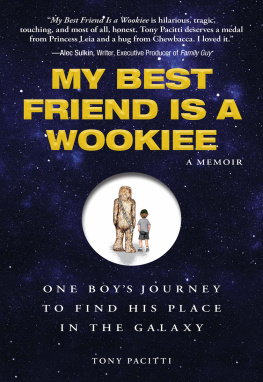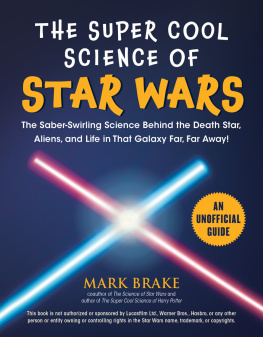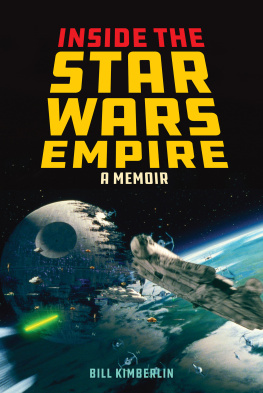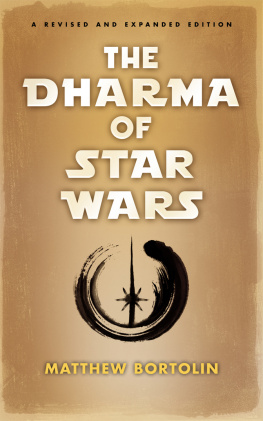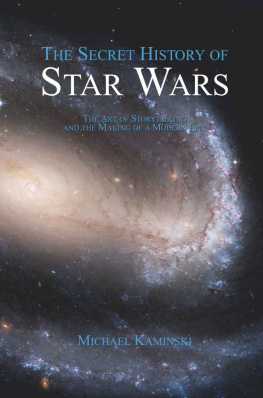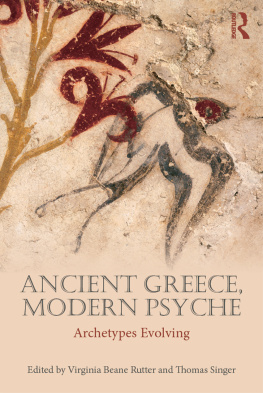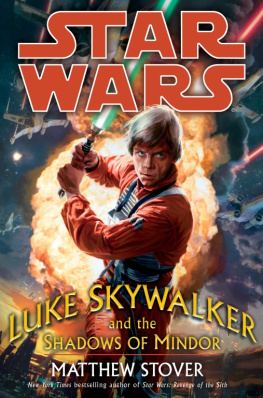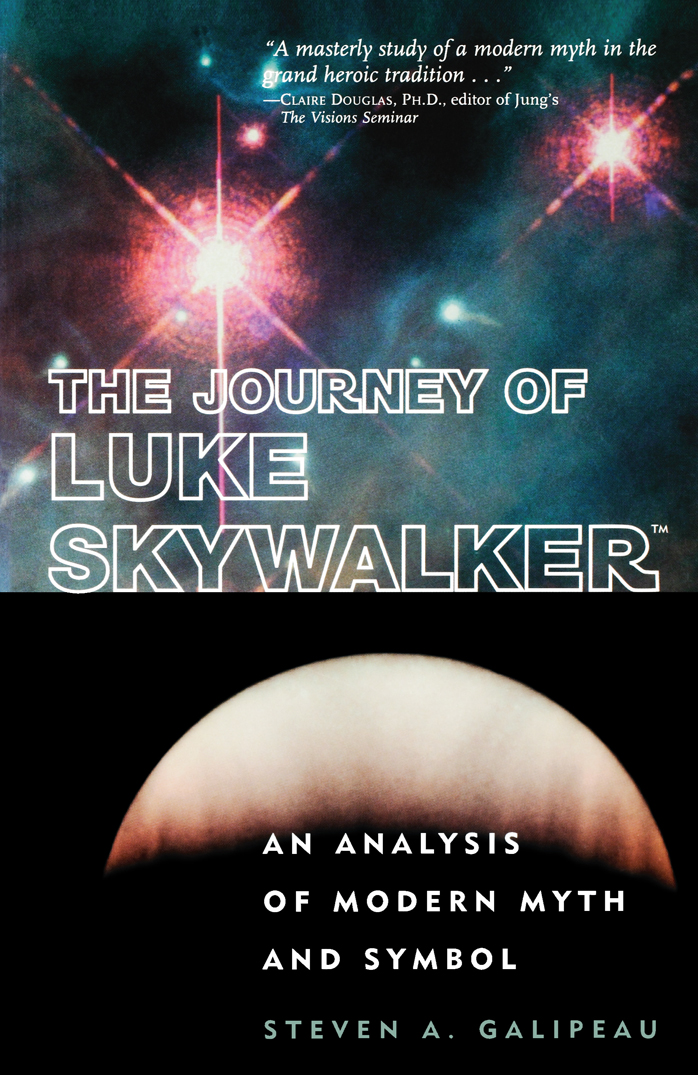A genuinely engaging book, even for those who, like me, are not altogether convinced Jungians. Galipeau, who takes the Star Wars sequence seriously and very much to heart, sees the Lucas films as embodying a collective social myth that speaks to the drama of the archetypalthe infinitewithin us. And this accounts, Galipeau says, for the enduring effect and personal value of all Star Wars movies. In Galipeaus view,... the Star Wars sequence, whose narrative he examines in amazing and often quite subtle detail, serves people in the way our other eternal stories do. The sequence successfully shows us our deepest conflicts and our most careful resolutions. These Galipeau reveals with the conviction and humanity of a very fine analyst, sensitive to the scope of Jungian psychology and to Jungs special grandeur, his value for those who wantwho needto understand themselves.
PROFESSOR LENNY KOFF University of California, Los Angeles

This book has been reproduced in a print-on-demand format from the 2001 Open Court printing.
To order books from Open Court, call toll-free 1-800-815-2280 or visit our website at www.opencourtbooks.com.
Neither this book nor its contents are endorsed or approved by or affiliated in any way with George Lucas or Lucasfilm Ltd. The opinions contained herein are those of the author only. Luke Skywalker is a trademark of Lucasfilm Ltd. All rights reserved.
Open Court Publishing Company is a division of Carus Publishing Company.
Copyright 2001 by Carus Publishing Company
First printing 2001
All rights reserved. No part of this publication may be reproduced, stored in a retrieval system, or transmitted, in any form or by any means, electronic, mechanical, photocopying, recording, or otherwise, without the prior written permission of the publisher, Open Court Publishing Company, a division of Carus Publishing Company, 315 Fifth Street, P.O. Box 300, Peru, Illinois, 61354-0300.
Library of Congress Cataloging-in-Publication Data
Galipeau, Steven A.
The journey of Luke Skywalker: an analysis of modern myth and symbol / Steven A. Galipeau
p. cm.
Includes bibliographical references and index.
ISBN-13: 978-0-8126-9943-2
1. Star Wars films. 2. Skywalker, luke (Fictitious character) I. Title
PN1995.9.S695 2001
791.43'75dc21
00-068439
Dedicated to my sons, Brendan and Owen
Table of Contents
Guide
Contents
Movies have added a new storytelling medium to modern culture, offering us an abundant variety of tales with visual and auditory qualities far exceeding those in the written word or the old oral narratives of the traditional raconteur. Often a movie script based on an earlier written work is adapted to the big screen, but in the case of movies like the Star Wars series, the story is created especially for this artistic medium. In either case the imagination of the moviemaker communicates with the viewer in what is, historically, a relatively new art form.
Since ancient times the stories of culturestheir mythologieshave carried much of the meaning and significance of the struggles of the people of those times and places. The study of myth and symbol has become a part of many modern disciplines, from archeology and anthropology to religious studies. Joseph Campbell, the prolific author of many books on mythology, had originally been a professor of literature. He became drawn to understand the earliest products of the human imagination as found in our mythic heritage.
Myths have also proven of interest to the pioneers of psychology. One myth in particular, the Oedipus myth, appealed to Freud. C.G. Jung, who discovered deeper layers of the unconscious than initially postulated by Freud, believed that all myths could help us comprehend these extensive levels of the unconscious that all humans sharewhat he referred to as the archetypal layer of the psyche. Since mythological themes often appear in our dreams and other spontaneous creations of the imagination, understanding the myths helps us to understand ourselves better.
My hope in this book is that my personal Jungian approach may give additional meaning to the story of the first three Star Wars movies, which contain an abundance of symbolism linked together in a remarkable way in what appears to be a simple story. The whole series of movies, projected to number six, is called Star Wars, and each movie also has its own title. The first Star Wars movie (Episode IV) is often referred to simply as Star Wars, whereas I generally refer to it by its proper title: A New Hope.
With the release of the Star Wars Special Editions (Episodes IVVI) in the winter of 1997 and The Phantom Menace (Episode I) in 1999, there is even more interest in and fascination with these films than when the first movie of the original trilogy was released over twenty years ago. The comments and questions of creative, thoughtful people over these years have further stirred my own reflections on the symbolic content of these films. As one woman wrote to me after hearing a tape of my 1997 lecture on Star Wars: A New Hope, When I first saw Star Wars I felt there was something of great importance going on here but had no vocabulary for what I sensed.... When I started studying Jung a few years ago, I realized that it was here that many valuable insights into the films meaning could be found.
I hope to provide a rich assortment of insights into the deeper meaning to be found in these filmsbeing aware, even as I do so, that new understandings will always emerge, just as they do when working on a fascinating dream. The symbolic richness of the storytelling in these films leads me to believe that the release of the three movies making up the Star Wars prequel, telling earlier parts of the story, will further amplify what the film viewer has already witnessed in the first three moviesjust as our dreams bring up past experiences and their meaning to shed light on our present and future. Similarly it is my belief that a closer exploration of the meaning of the first three films will add to the depth of the experience of viewing the films that are now being released. I would expect that we will gain further appreciation of Luke Skywalkers accomplishment at the end of Return of the Jedi, especially from a psychological point of view.
The early reactions by some critics to Star Wars: Episode IThe Phantom Menace, which appeared in 1999, clearly demonstrate how lack of an informed sense of the symbolic nature of the films can easily lead to misunderstanding of George Lucass style of storytelling. Yet the generally enthusiastic reception of the film testifies to its powerful mystique in our cultures imagination.
In the Epilogue, I provide a preliminary discussion of The Phantom Menace. Its too early to analyze this movie in the same detail as I have analyzed Episodes IV, V, and VI. The original trilogy was first released over twenty years ago and then re-released in 1997, when it was, once again, enthusiastically received by a vast audience. There is much more story to come in the new trilogy, and this will provide greater context for The Phantom Menace.
You dont need any prior knowledge of Jungian psychology to follow this book. To help readers who are not familiar with the terminology, a glossary of basic Jungian terms is included at the back. The notes for each chapter, also found at the back, provide background information and point to additional resources for exploring the symbolic and mythological themes described here.


